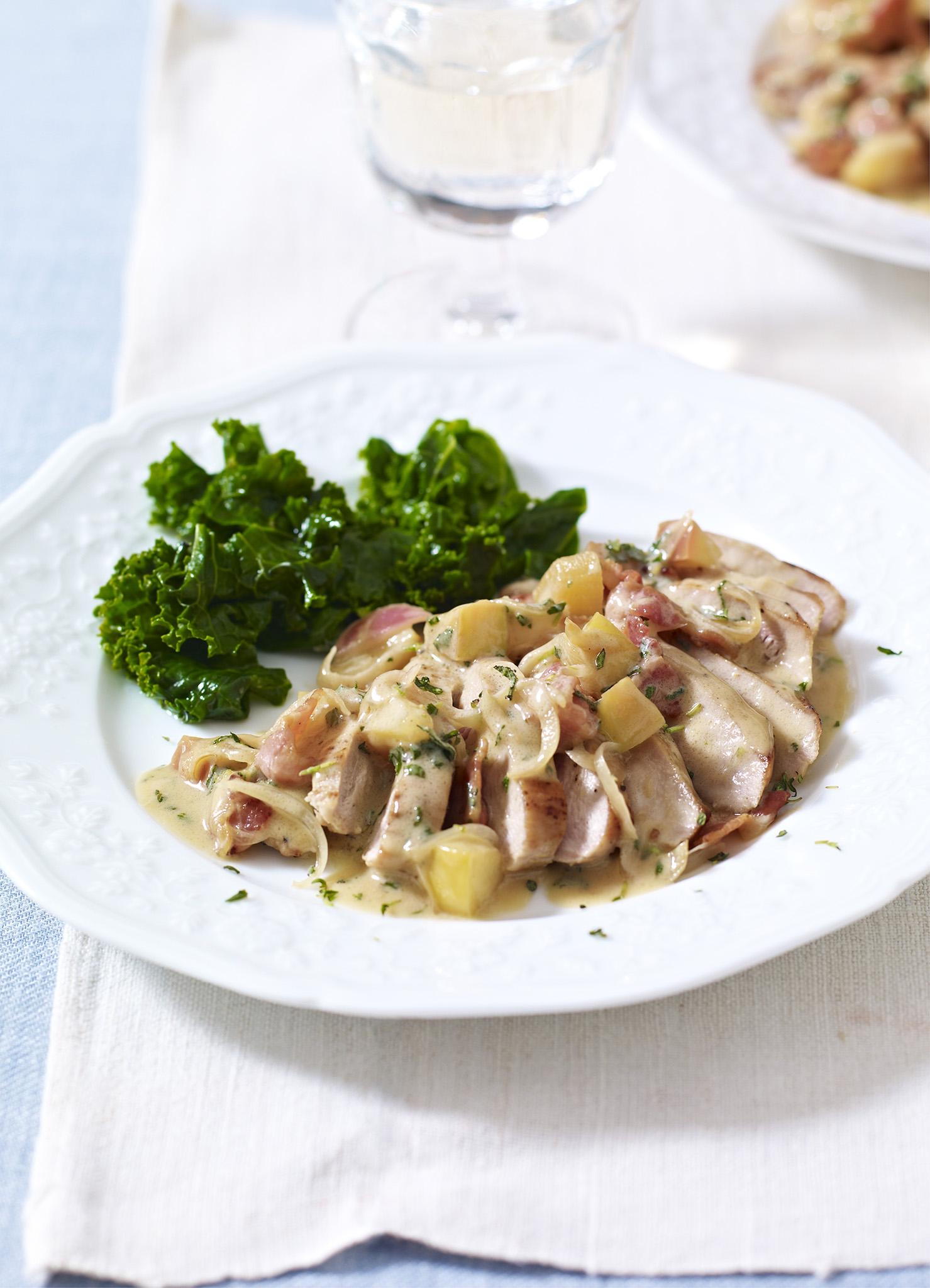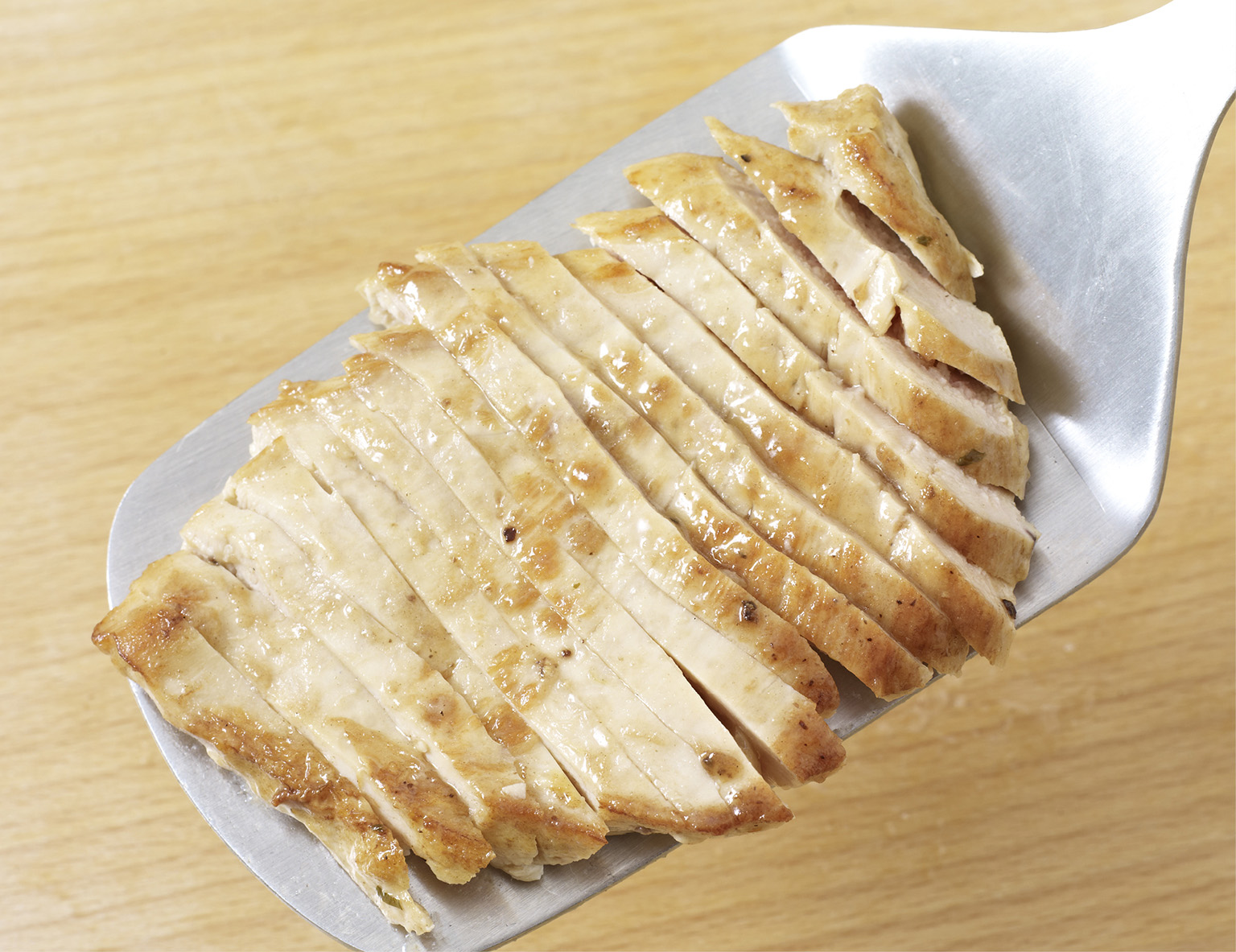
Supper always feels special when I cook pheasant. Here, I’ve teamed it with apples and cider, as they go so well with the richness of the meat. Serve with curly kale.
Serves 4
4 boneless pheasant breasts, skinned
2 tbsp all-purpose flour
salt and freshly ground black pepper
1 tbsp olive oil
2 tbsp (25 g) butter
51⁄2 oz (150 g) bacon, cut into 1⁄2in (1cm) pieces
1 crisp apple, such as Braeburn or Cox, peeled, cored, and cut into 1cm (1⁄2in) cubes
4 shallots, thinly sliced
11⁄4 cups (300 ml) hard cider
2⁄3 cup (150 ml) pheasant or chicken stock
1 tbsp red currant jelly
4 fl oz (120 ml) full-fat crème fraîche
11⁄2 tsp finely chopped fresh sage
11⁄2 tsp finely chopped fresh thyme
1. Place the pheasant breasts on a board and cover with plastic wrap. Pound with the base of a saucepan to flatten very slightly. Put the flour on a plate, season, and coat the pheasant in the flour. Heat the oil and butter in a large, deep-sided, nonstick frying pan or sauté pan over medium–high heat. As soon as the butter is foaming, add the meat, skinned-side down. Fry for 2 minutes on each side until golden brown, pressing it flat with a spatula. Transfer the meat to a dish and set aside.
2. Put the bacon in the pan and cook for 5 minutes over medium–low heat, stirring often. Add the apple and shallots and fry for 5 minutes over medium heat, stirring frequently or until softened and lightly colored. Add the cider, stock, red currant jelly, and some salt and pepper. Bring to a boil, stirring constantly until the jelly has melted. Reduce the heat and return the pheasant and its juices to the pan. Simmer gently for 2 minutes, turning the breasts halfway and basting frequently. Remove the pheasant to a board, cover loosely with foil, and let rest for 10 minutes.
3. Meanwhile, increase the heat to high and stir the crème fraîche into the sauce. Add 1 teaspoon each of sage and thyme and simmer gently until thickened. Season. Slice the pheasant and arrange on warmed plates (see Tender, thinly sliced pheasant). Spoon the sauce over and around the meat. Serve immediately, sprinkled with the remaining sage and thyme.

PHEASANT BREASTS WITH APPLE AND CIDER
KEYS TO PERFECTION
Tender, thinly sliced pheasant

1 After the pheasant has rested, slice the breasts thinly on the diagonal with a sharp chef’s knife or carving knife. Ideally, slice no more than 1⁄4in (5mm) thick.

2 If you keep the slices close together as you carve the pheasant breasts, you can easily transfer each breast to a dinner plate with a spatula.
Sometimes it can be difficult to buy pheasant breasts on their own, but whole birds are inexpensive so you can buy 2 pheasants and remove the breasts, or ask your butcher to remove the breasts for you. If you buy whole birds, you can use the carcass, wings, and legs to make a flavorful stock. Some of this stock can be used in this recipe and the rest can be frozen. Pheasant breasts are lean and should not be overcooked, or they will be dry. Cook for the time stated and no longer.